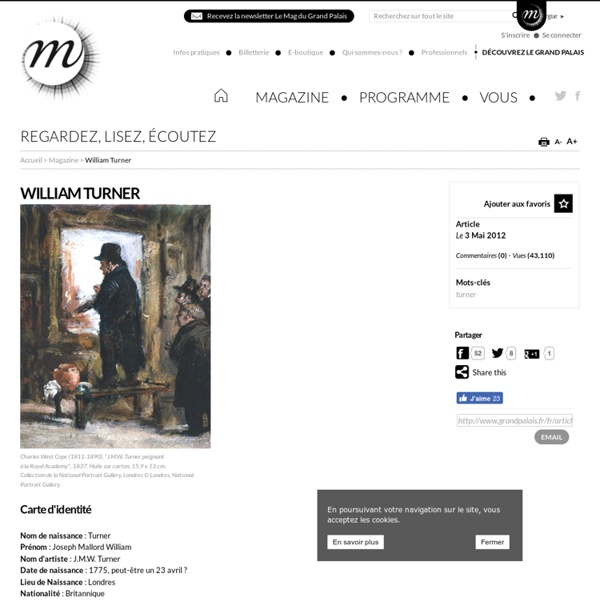Grammar,Vocabulary ESL Worksheets,Handouts,Tests,Puzzles
ESL Printables: English worksheets, lesson plans and other resources
How Are You?
Read the conversations below: Ken: Hello, My name's Ken. What's your name? Ken: Where is that girl from? Complete the conversation. The above conversations used the verb "to be". Positive Negative Questions Read the text below My name is Ken Beare and I'm a teacher. Write a short paragraph about you! Continue Learning for Beginners Unit 1 Learning the Basics: Numbers, ABC's and the Verb 'to Be' More beginner's Topics
memovoc.com
STEP 1 : Apprenez les moments de la journée. Exercice 1 : Regardez cette vidéo. Répétez les phrases à haute voix. Exercice 2 : Ecoutez et déplacez le mot sur l'image qui convient. Si c'est correct, l'image s'efface. STEP 2 : Apprenez à dire au revoir, et bonjour selon les moments de la journée. STEP 3 : Vérifiez ce que vous avez appris avec ce quiz en 6 questions STEP 4 : Une autre vérification... STEP 5 : Une vidéo sous forme de sketch pour apprendre d'autres salutations simples Pensez à répéter ces expressions. STEP 6 : Apprenez à adapter vos salutations aux personnes rencontrées Quiz 1 : Associez le son et la situation. STEP 7 : Autres salutations et phrases utiles. STEP 8 : Apprenez les formules de politesse Quiz 1 : Associez le son et la situation. STEP 9 : Récapitulons : Les 8 expressions essentielles Activité 1 : Choisissez l'expression que vous utiliserez dans ces différents cas Activité 2 : Vrai ou faux ? STEP 11 : Comment répondrez-vous à la question "How are you ?"
45 ways to avoid using the word 'very'
Writers Write is your one-stop resource for writers. Use these 45 ways to avoid using the word ‘very’ to improve your writing. Good writers avoid peppering their writing with qualifiers like ‘very’ and ‘really’. According to Collins Dictionary: ‘Padding is unnecessary words or information used to make a piece of writing or a speech longer. Adding modifiers, qualifiers, and unnecessary adverbs and adjectives, weakens your writing. This post gives you 45 ways to avoid using the padding word ‘very’. Three Telling Quotes About ‘Very’ “Substitute ‘damn’ every time you’re inclined to write ‘very;’ your editor will delete it and the writing will be just as it should be. If you enjoyed this, you will love: Top Tip: If you want to learn how to write a book, sign up for our online course. by Amanda Patterson © Amanda Patterson
Differences Between American and British English
By Kenneth Beare While there are certainly many more varieties of English, American English and British English are the two varieties that are taught in most ESL/EFL programs. Generally, it is agreed that no one version is "correct" however, there are certainly preferences in use. The three major differences between between American and British English are: Pronunciation - differences in both vowel and consonants, as well as stress and intonation Vocabulary - differences in nouns and verbs, especially phrasal verb usage Spelling - differences are generally found in certain prefix and suffix forms The most important rule of thumb is to try to be consistent in your usage. Use of the Present Perfect continue reading below our video Loaded: 0% Progress: 0% In British English the present perfect is used to express an action that has occurred in the recent past that has an effect on the present moment. I've lost my key. In British English the above would be considered incorrect. British English:
Shopping for the Day
Shopping online or at local department stores is an activity many people enjoy. How often do you go shopping for the following items and where do you buy them: clothing, gifts for friends and family, music, DVD movies, electronics? Listen to the conversation by pressing the "Play" button, and answer the questions. Press the "Final Score" button to check your quiz. [ Other Audio Options: Play RealMedia | Play Window Media ] Listen to the conversation again as you read the Quiz Script. Do the Text Completion Quiz. With a partner, decide on a particular item you want to buy like a camera, computer, or book. Imagine that you want to buy a gift for a friend for her birthday. Want to Tell People About This Listening Activity? Now, write your opinions on a similar topic at Randall's ESL Blog HERE. Randall's Sites: Daily ESL | ESL Blog | EZSlang | Train Your Accent | Tips For Students | Hiking In Utah
Expressions To React, Hesitate Or Conclude
Your report has been submitted. There was a problem submitting your report. Please contact Adobe Support. Report Abuse If you feel that this video content violates the Adobe Terms of Use, you may report this content by filling out this quick form. To report a Copyright Violation, please follow Section 17 in the Terms of Use. Embed



